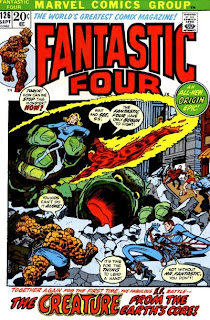One of the benefits of this launch is that it provides many of our fans with the opportunity to "legally" read our comics. We sincerely hope that this service offering will curb these "illegal" downloading activities. The music industry's reactions to the illegal downloading did help us with us the formation of our business strategy, but it was not the driving factor behind our business model.
It turns out that Marvel (along with DC) is doing more than "hoping". In the same interview, Buckley says that Marvel will be evaluating illegal download sites on a case by case basis. The following announcement was posted a couple of days ago at Z-Cult FM, a torrent site for downloading comics.
We got legal letters from both Marvel and DC Comics who have been working together to send us these legal threats. We are currently dealing with the legal issues and they have given us 3 days before they are forced to take anymore action.
Z-Cult FM website was put offline [...] after I got the email while in work and issued a code red alert (we have drills also 5 times a year). We decide [sic] putting the site offline was best course of action to analyse the situation and decide our best course of action. We have confirmed one of the legal letters is 100% from DC Comics when a phone call was made to DC Comics who confirmed the email and its contents. As of today we was unable to contact Marvel and we are trying again tomorrow just to 100% confirm it.
Today we decided it was time to bring site back online but without the torrent and download sections. One of Marvels demands was we take down Z-Cult FM for good but we will never let the main Z-Cult FM site die even if that means torrent free.
We are currently deciding our future and working on it as we speak. We will do our best to keep everyone happy but our future decissions might cause some of our users to think we have given in, but this isn't the case, we are just currently working through this situation and taking the best course of action to keep the site up and our staff safe.
Z-Cult FM is a site that has operated for a few years, with the bigger publishers being aware of its existence for some time. The site usually contained links for downloading (via bit torrent) scans of comics of all genres, publishers, and decades; including the biggest publishers' latest releases.
The scanning and pirating of comics will continue in the near future (there are still many other sites in which these comics are available for free), but Marvel and DC taking joint action against the best-known sites surely will have some effect. My guess is that new sites will pop up to fill the void left by Z-Cult FM and the also recently-shut down Demonoid, but that some of these new sites may end up having more restricted memberships (an "only by invitation" system).







